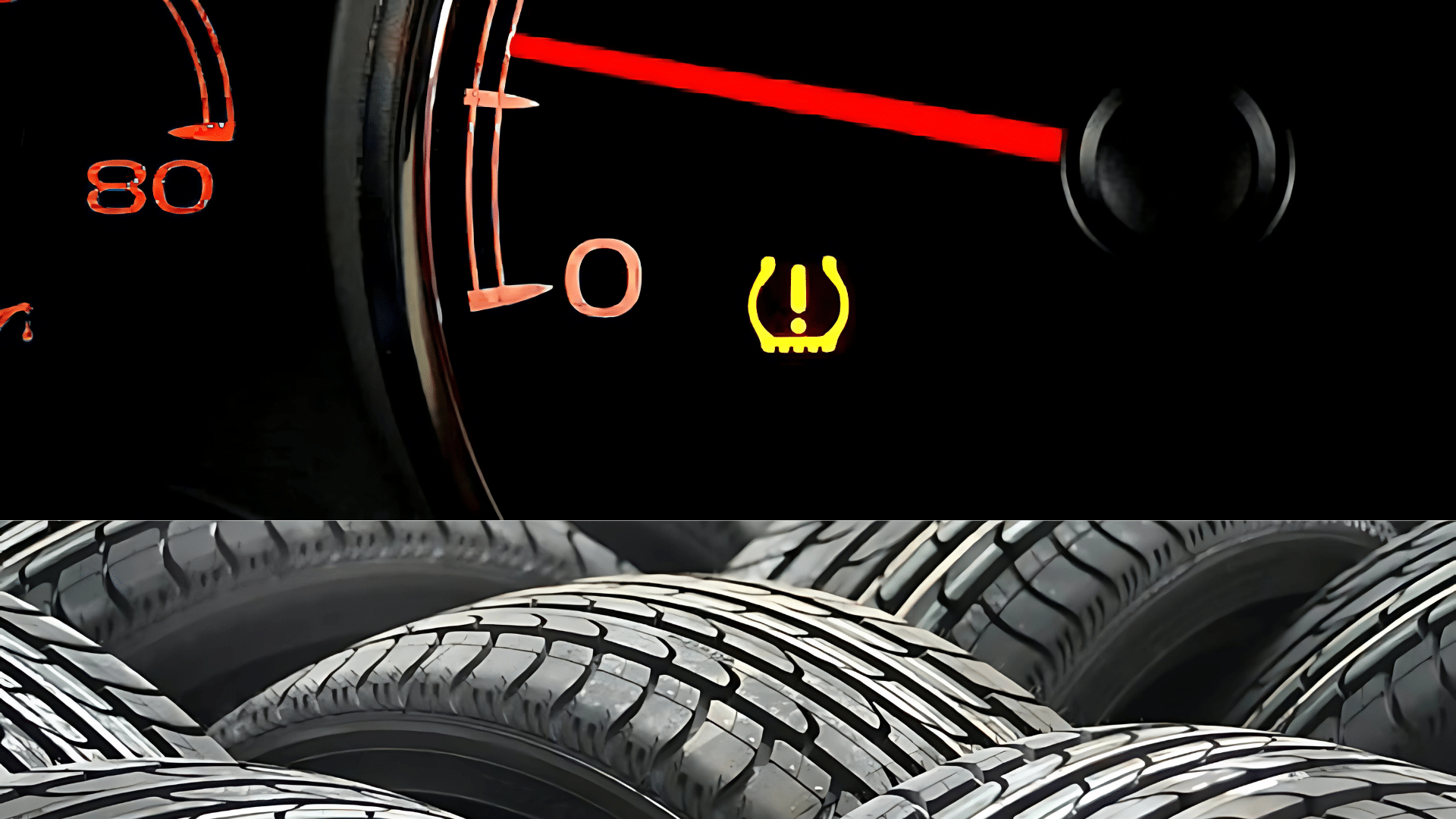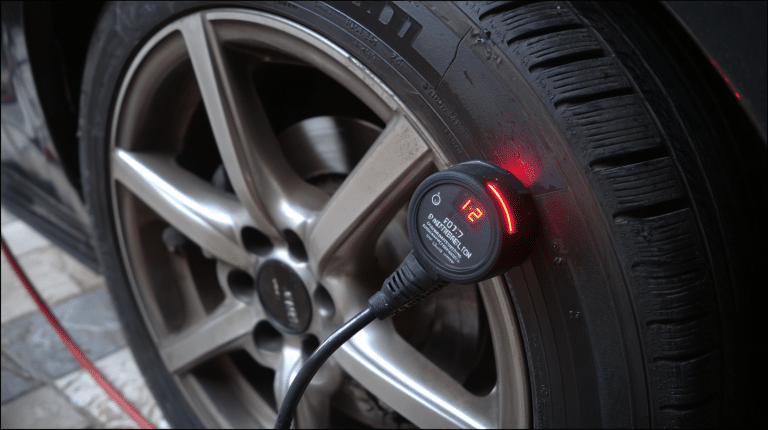If you’ve ever seen that annoying tire pressure light pop up on your dashboard, you’re not alone. It happens to almost everyone, and while it can be a little unsettling, it’s usually not a major problem.
The tire pressure sensor is there to keep you informed about your tire health, making sure you’re not driving around with dangerously low tire pressure.
But sometimes, the light doesn’t go off after you’ve inflated your tires, and that’s where resetting the sensor comes in.
I’ve been there myself, spending way too much time wondering how to get that pesky light to turn off!
This guide will walk you through everything you need to know, from understanding the sensor to troubleshooting when the light won’t turn off.
By the end of this, you’ll be able to handle the situation with ease.
Understanding Tire Pressure Sensors

Tire pressure sensors are vital for your vehicle’s safety and efficiency. These small devices are installed inside your tires to monitor air pressure.
When the pressure drops below a safe level, the sensor sends a signal to the car’s computer, lighting up the tire pressure warning light.
There are two types: direct sensors, which measure pressure inside the tire, and indirect sensors, which estimate pressure using the ABS and wheel speed sensors.
These sensors not only keep you safe by alerting you to low tire pressure but also help prevent tire damage and boost fuel efficiency.
Maintaining proper tire pressure ensures your vehicle runs smoothly and safely.
How Tire Pressure Sensors Affect Vehicle Performance
You might be thinking, “Why should I care about the tire pressure sensor at all?” Well, these little sensors can have a big impact on your car’s performance, safety, and fuel efficiency.
- Improved Safety: Tire pressure sensors alert you when your tires are underinflated, reducing the risk of blowouts or accidents.
- Enhanced Fuel Efficiency: Properly inflated tires reduce rolling resistance, improving fuel efficiency and lowering fuel costs.
- Better Tire Longevity: Sensors help maintain optimal tire pressure, which can prevent uneven wear and extend the lifespan of your tires.
- Improved Handling and Stability: Consistent tire pressure ensures your vehicle handles better, providing better traction and stability on the road.
- Cost Savings: Prevents the need for costly repairs by addressing tire issues early, avoiding major damage to tires and other vehicle components.
What Causes the Tire Pressure Light to Turn On?
If your tire pressure light suddenly pops up on the dashboard, it’s time to investigate. These are the most common reasons why it happens:
- Low tire pressure: This is the most obvious reason. It can happen due to normal air loss, a slow leak, or drastic temperature changes.
- Sensor malfunction: If the sensor itself is broken or damaged, it might not be reading the pressure correctly, causing the light to turn on unnecessarily.
- Temperature changes: If it’s really hot or cold outside, it can affect your tire pressure, making the sensor think something is wrong.
- Tire damage: Sometimes the light will come on because there’s a problem with the tire, like a puncture or a valve stem issue.
If you’re unsure if the issue lies with the tire or the sensor, you can use a manual pressure gauge to verify if the tire’s pressure is actually low.
If it’s okay, then it might be a sensor issue.
Step-by-Step Guide to Resetting Tire Pressure Sensors
Now let’s talk about how to reset the sensor. It’s actually not as complicated as it sounds, and it can save you a trip to the mechanic.
1. Manual Reset (For Most Vehicles)
Turn on your car, but don’t start the engine. Just turn the key to the “on” position.
Next, locate the reset button. It’s usually found under the dashboard or near the steering wheel.
Hold the reset button down for about 5-10 seconds. You’ll see the light blink and then go off.
Finally, start the car. The light should stay off after that. If it doesn’t, repeat the process once more.
2. Reset Using a Tire Pressure Gauge
Use the gauge to make sure all tires are properly inflated.
If the pressure is correct, some vehicles will reset the light automatically once you drive for a few miles.
If the light doesn’t go off after driving, you may need to manually reset it or check for sensor issues.
3. Using the Infotainment System (If Applicable)
Some modern cars allow you to reset the tire pressure light through the infotainment system.
Simply go to the “settings” or “vehicle settings” menu, select “TPMS reset,” and follow the on-screen instructions to reset the light.
After confirming, make sure to drive for a few minutes to ensure the system registers the reset.
What to Do If the Tire Pressure Light Won’t Turn Off?
If the light won’t go off even after resetting, it might be a sign of something more serious. This is how you can troubleshoot:
- Check for sensor issues: The sensor could be broken or malfunctioning.
- Inspect the valve stem: Sometimes, the valve stem can get damaged, causing issues with reading the pressure.
- Look for tire damage: A punctured tire can cause the pressure to drop, triggering the light.
- Seek professional help: If you’ve tried everything and the light won’t go off, it’s time to consult a mechanic. They can diagnose the problem and replace faulty sensors if needed.
If the tire pressure light won’t turn off after troubleshooting, it’s best to seek professional help. A mechanic can accurately diagnose the issue and replace any faulty components.
Don’t ignore it. Getting it checked early can save you from bigger problems down the road.
Resetting Your Tire Pressure Light: How Long Does It Take?
The reset process for the tire pressure light is usually quick.
After adjusting your tire pressure, it may take just a few minutes of driving for the system to register the changes.
The light should turn off after a few miles if the reset is successful. If the light stays on, double-check your tire pressures and ensure they are all at the recommended levels.
If the issue persists, it may indicate a problem with the sensor, and you should consider seeking professional help.
Proper tire maintenance can prevent future issues with your tire pressure light.
Maintenance Tips for Tire Pressure and Sensors
Proper maintenance of your tire pressure and sensors ensures your vehicle runs smoothly, avoids issues, and improves fuel efficiency. These are some simple tips to keep them in top shape.
Maintaining the Tire Pressure
- Check tire pressure regularly: At least once a month and before long trips.
- Use a good tire pressure gauge: This will give you accurate readings every time.
- Maintain the recommended pressure: You can find this information on the tire sidewall or in your car’s manual.
- Adjust for seasonal changes: Tires tend to lose pressure when it’s cold, so keep an eye on them during the winter months.
- Inspect tires for damage: Regularly check for punctures, cracks, or bulges that could affect tire pressure.
- Avoid overloading your vehicle: Carrying too much weight can affect tire pressure and lead to uneven wear.
Caring for Tire Pressure Sensors
- Keep your tires properly inflated: This helps prevent unnecessary wear on the sensors.
- Avoid hitting curbs or potholes: A hard impact can damage the sensor.
- Replace faulty sensors: If the sensor is broken or malfunctioning, get it replaced. Most sensors last about 5-10 years.
- Check sensor function regularly: If your tire pressure light keeps turning on, it might be a sign of a malfunctioning sensor.
By following these simple maintenance tips, you’ll keep your tires and sensors in great shape, ensuring safety, efficiency, and longer-lasting performance.
Final Thoughts
Now that we’ve covered everything from how to reset your tire pressure sensor to troubleshooting and maintenance tips, you should be able to handle the tire pressure light situation like a pro.
If it’s a simple reset or a more serious issue, you’re now armed with the knowledge to fix it.
Don’t forget to check your tire pressure regularly, and if you notice the light won’t go off after a reset, it might be time for a professional to take a look.
With all this info, I’m confident you can make the right decision when it comes to managing your tire pressure sensors!
Taking care of your tire pressure system will save you time, money, and keep you safe on the road.








